Landscape Beauty: Enhancing Your Garden with Stump Grinding | In-Depth Guide
A stump in your garden can really disrupt the beautiful landscape you’ve worked so hard to cultivate. Not only is it an eyesore, but it also takes up valuable real estate in your outdoor space. Removing a troublesome tree stump may seem daunting, but with the right approach, you can reclaim your garden and restore its natural beauty.
Stump grinding is an effective and efficient method to eliminate ugly stumps, leaving behind a flush surface ready for grass, plants or whatever you have in mind. This straightforward landscape enhancement project will open up new possibilities for the look and functionality of your garden.
Why Remove That Pesky Stump?
Before deciding on stump grinding for your landscape vision, it helps to review the reasons why you likely want that obstinate stump gone in the first place:
- It’s an eyesore. A leftover tree stump in your garden sticks out like a sore thumb. It detracts from the overall aesthetic you want for your outdoor space.
- It takes up valuable real estate. With limited yard space, a stump occupying square footage could prevent you from installing a fire pit, garden bed, playset or other landscape feature.
- It won’t decay anytime soon. Depending on the type of tree, some stumps can take a decade or longer to rot away on their own. Do you really want to look at that unsightly thing for that long?
- It attracts pests. Stumps provide shelter for all kinds of critters you don’t want hanging around your property – insects, snakes, rodents and more.
- It’s a tripping hazard. Protruding roots and uneven ground around a stump can present safety issues for anyone walking in the area.
- The roots may resprout. Some species of trees, such as Aspen, Willow and Birch, are prone to sending up new shoots from remaining roots. This recurrence of unwanted regrowth is another good reason to grind out stumps.
Clearly, waiting years for a stubborn stump to decompose is not the ideal solution. Taking matters into your own hands with stump grinding lets you reclaim your yard now.
Stump Grinding 101
So what exactly is stump grinding, and how does the process work to remove those unsightly remnants once and for all? Here’s a quick overview:
A heavy-duty piece of equipment called a stump grinder chews up the stump and roots using a rotating cutting disc with hardened steel teeth. It’s sort of like a giant, powerful version of a handheld rotary tool.
The operator carefully guides the cutter head around the circumference of the stump, slowly grinding away all the wood up to 12 inches below ground level. The end result is a pile of wood chips or mulch that can be hauled away or spread around your garden.
Compared to extracting the entire stump by digging it out manually, grinding is significantly faster and less labor-intensive. And unlike burning, which only scorches the visible portion, grinding thoroughly eliminates all subsurface roots and waste material.
Envision the Possibilities
Free from the confines of that stubborn old stump, a world of possibility opens up when it comes to enhancing the functionality and natural splendor of your landscape. Maybe you’ll use the space to:
- Plant a flowering tree or vibrant garden bed
- Install a unique water feature
- Set up a cozy sitting area
- Expand your lawn
- Add play equipment for kids
- Set down a patio or fire pit
You’re limited only by your vision and creativity. Removing the stump removes the limits on improving your outdoor living area.
Choose Your Grinder
Taking on a DIY stump grinding project requires renting or purchasing the necessary heavy-duty equipment. Home improvement centers like Home Depot and tool rental outfits offer stump grinders suitable for residential jobs. Expect to pay anywhere from $100 to $250 per day as a rental fee.
Or if you foresee needing to grind stumps on an ongoing basis, you may want to consider buying your own dedicated machine. High-quality gas-powered units designed for home use run $1,000 or more. Look for reputable brands like Vermeer, Husqvarna and Bluebird.
While functionally similar, stump grinders come in different sizes and power configurations. Key factors to consider include:
- Cutting width – Distance from the center of the cutting wheel to the edge. A wider swath means faster grinding.
- Cutting depth – How far below ground surface the cutter wheel extends. Deeper access is key for more complete root removal.
- Maneuverability – Ability to access tight spaces and vary the grinding angle.
- Tooth design – Carbide-tipped teeth stand up well to rocky soil conditions. Double-sided teeth provide quicker grinding.
- Engine power – More horsepower yields faster results, especially with hardwoods.
- Safety features – Roll bar, debris shield and emergency shutoff are must-have items.
When renting or buying, explain your specific stump removal needs to get the best equipment recommendation.
Grind Down Your Stumpy Headache
By now the prospect of finally banishing that bothersome stump from your garden likely has you ready wield a grinder yourself. But hold up a sec before firing up the motor. Proper preparation is key to smooth and successful DIY stump removal.
Gear Up for Safety
Dealing with flying wood chips and debris, exposing underground objects, and operating high-powered machinery warrants taking safety measures seriously. Be sure to wear:
- Sturdy boots
- Protective eyewear
- Heavy gloves
- Ear protection
- Dust mask
- Full-length pants and long sleeves
Make your three emergency shutoff methods easily accessible before proceeding:
- Shut down switch or key
- Cutoff cord to stop engine
- Manual brake
Get Your Grind On
With safety gear in place and emergency stops at the ready, you’re primed to grind away what’s left of that pesky stump:
- Start by clearing away any rocks or debris around and underneath the stump.
- Encircle the area with heavy plastic sheeting to contain flying wood chips and sawdust.
- Make precise cuts around the outer edge to square off the stump perimeter.
- Systematically grind across the top horizontal face of the stump in overlapping passes.
- Tilt the cutter wheel to incrementally grind deeper below surface level.
- Vary the grinder angle and direction to eliminate all subsurface wood and roots.
- Repeat until all traces of the stump are fully pulverized up to 12 inches down.
- Inspect the cavity and grind or pick away any remaining wood fragments.
- Rake smooth and dispose of residual wood chips and sawdust.
Follow all manufacturer operating instructions, taking care to avoid kickback from the high-RPM cutter wheel suddenly snagging on denser wood sections. Work slowly and deliberately for maximum control and safety.
In an hour or two, you’ll have completely eradicated even the deepest roots of the most stubborn stump. Just a fresh canvas remains, ready for you to begin installing beautiful new landscape features.
Reclaim Your Yard With Stump Grinding
Now’s the time to reclaim your garden from the grip of an unsightly leftover tree stump. Through proper planning, safety precautions and methodical grinding techniques, you can eliminate this landscape eyesore for good.
The result will be rejuvenated outdoor living space with refreshed aesthetic appeal or expanded practical functionality. Where once a bothersome stump occupied your yard, anything is now possible to enhance natural beauty and enjoyment. The only limit is your vision for creating an ideal landscape.
Frequently Asked Questions About Stump Grinding
What size stump grinder will I need?
The size of stump grinder you need depends primarily on the diameter of the stump. A machine with a cutting width of at least 2 inches wider than your stump is a good minimum. More challenging removal jobs will require a heavier-duty model with more power.
How long does it take to grind a stump?
The amount of time varies greatly depending on stump size, wood hardness, root depth/extent and machine power. Plan on investing at least 1-3 hours for an average job. Hardwoods generally take longer than softwoods. The thicker and deeper the roots, the more grinding required.
How much does stump grinding cost?
If renting equipment, figure rental fees of $100-$250 per day, plus costs to haul off debris. Hiring a professional averages $100-$400 per stump depending on size. Buying your own gas-powered home grinder represents an initial investment of $1000+ but allows tackling unlimited stumps yourself.
Should roots be removed when grinding a stump?
Removing subsurface roots is critical for ecological and practical reasons. Left to decay, old roots provide pest habitat. And new shoots can regrow from remaining live roots. Grinding out stump roots to a 12-inch depth prevents these issues.
What can I put in a hole after grinding a stump?
With grinding debris and roots eliminated down to mineral soil, the possibilities are wide open. Backfill with nutrient rich topsoil to plant grass, trees, shrubs or flowers. Or create a vegetable garden, water feature, fire pit seating area or play space for kids.
Is stump grinding necessary?
While waiting years for natural decay is an option, grinding is by far the quickest and most complete method for removing troublesome stumps. And unlike extraction or burning, grinding eradicates the entire stump above and below ground efficiently.
How soon can I plant after stump grinding?
After backfilling the cavity with quality topsoil, new plants can go in right away. Avoid compressed soils that restrict root growth. Test and amend soil nutrients if planting edibles. Monitor the area while new plantings establish to ensure settled soil hasn’t left air pockets.
Can I burn a stump after grinding?
Any remnants left to burn would indicate the stump wasn’t fully ground out. Monitor the results during grinding to ensure all wood and roots have been eliminated. Repeat passes likely required for more thorough pulverization. Burning partially ground stumps can damage soil health.
Is stump grinding necessary for removing a small stump?
Even small stumps have extensive root networks up to three times the branch spread. So yes, thorough grinding is advised to remove all subsurface wood regardless of stump size. And small machines are well suited for grinding out stumps less than 10 inches in diameter quickly.
Further Reading Other Relevant Posts:
How Stump Grinding Promotes Tree and Plant Health
The Art of Professional Tree Planting

